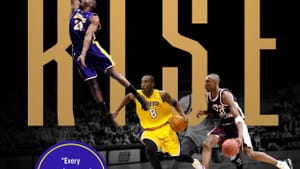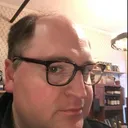Stay in the Loop
BSR publishes on a weekly schedule, with an email newsletter every Wednesday and Thursday morning. There’s no paywall, and subscribing is always free.
Mamba mentality in the city of brotherly love
The Rise: Kobe Bryant and the Pursuit of Immortality by Mike Sielski

Where were you when you heard the news that Kobe Bryant died in a helicopter crash in January 2020? Author Mike Sielski asks that question early on The Rise: Kobe Bryant and the Pursuit of Immortality, his new book about the late basketball great. My answer is that I was on a trip to Cuba without good Internet. When I logged on when I got back to my hotel room, I had about 15 news alerts and even more texts.
Because Bryant was nearly my exact age (younger than me by about three weeks) and had spent much of his childhood in the Philadelphia suburbs, quite a few people I knew had their own Bryant stories. And as if to demonstrate the reach of his popularity that crossed national and even embargo lines, the next day I saw a street vendor in Havana wearing a Kobe jersey.
From Lower Merion to the world
Another person who is around Bryant's generational cohort is Mike Sielski, one of the best current sports columnists for The Philadelphia Inquirer. His new book is not a comprehensive examination of Bryant's entire life and career—that will have to be left to other biographers—but rather a more Philadelphia-centric look at Bryant's formative years. It mostly focuses on his childhood and time at Lower Merion High School, up until he was drafted into the NBA in 1996.
None of Bryant's immediate family members cooperated with the book, but Sielski conducted more than 100 interviews with coaches, teammates, and others who crossed paths with Bryant during his Philadelphia years. He also made significant use of a large cache of old interviews of Bryant by Jeremy Treatman, a Sielski friend and former assistant coach at Lower Merion.
The book captures what it was like in the Philadelphia area, and especially its basketball community, when Bryant went from the son of a middling former Sixers player to a nationally known phenomenon. By his senior year, Bryant was hanging out with Boyz II Men and taking Brandy to prom. Then-Sixers coach John Lucas frequently sent his players out to play pickup games all over Philadelphia, which put Bryant on the court with established NBA players when he was still a young teenager.
There's plenty of analysis of the question of where Bryant would have gone to college, especially the doomed, long shot attempt by La Salle University (the author's alma mater) to recruit Bryant, as well as his ultimate decision to head straight to the NBA, which was uncommon back then.
Far from perfect
The book doesn't ignore that despite the outpouring that followed his death, Bryant was not anything close to a universally beloved figure. He was derided as selfish and too eager to take the first shot. He had high-profile feuds with his teammates and coaches. The sexual assault accusation in Colorado in 2002 permanently tarnished his reputation for a great many people, even after his passing. While the book isn’t about that period of Bryant’s life, Sielski isn't shy about mentioning it.
The book also gets into another fascinating dynamic that was always there with Bryant: he was sort of from Philadelphia and sort of not. He was born at Lankenau Hospital in Wynnewood to parents who were area natives. His father played for La Salle and the Sixers. But Bryant grew up in the suburbs and spent several years of his childhood in Italy, and played high school ball in Lower Merion.
Bryant grew up in relative comfort and privilege, which led many Philadelphia basketball fans to question his authenticity. This was in contrast to his fellow guard from the 1996 NBA Draft Allen Iverson, who wasn't a native, didn’t come from privilege, and played most of his career in Philly. These questions were a staple of barroom and sports radio arguments for the entirety of both men’s careers.
And while he once appeared on the cover of Philadelphia magazine in his father's Sixers jersey, Bryant played his entire NBA career with the Los Angeles Lakers. He even took special pleasure in beating Iverson and the Sixers in the 2001 NBA Finals. But what makes for a fascinating what-if is that Lucas, the ex-Sixers coach, says in the book that he would have drafted Bryant if he'd still been running the team in 1996. While Lucas had been fired by then, his successor, Sielski writes, attempted to trade for a second first round pick in order to keep Bryant in town.
Because I didn’t live around here in the 90s, I didn’t experience Kobe’s rise firsthand, and I have no Kobe stories. I was, however, amused at the multiple mentions of Bryant's Lower Merion teams playing Marple Newtown, the alma mater of my wife and future school of my kids, and thrashing them every time. The highest compliment I can pay to Sielski’s book is that it captured what the Kobe Bryant Philadelphia epoch was like.
Sielski will discuss the book at an in-person event at the Free Library of Philadelphia’s Parkway Central Library on Thursday, January 13 at 7:30pm.
What, When, Where
The Rise: Kobe Bryant and the Pursuit of Immortality. By Mike Sielski. New York City: Macmillan, January 11, 2022. 384 pages, hardcover, $29.99. Get it here.
Sign up for our newsletter
All of the week's new articles, all in one place. Sign up for the free weekly BSR newsletters, and don't miss a conversation.

 Stephen Silver
Stephen Silver